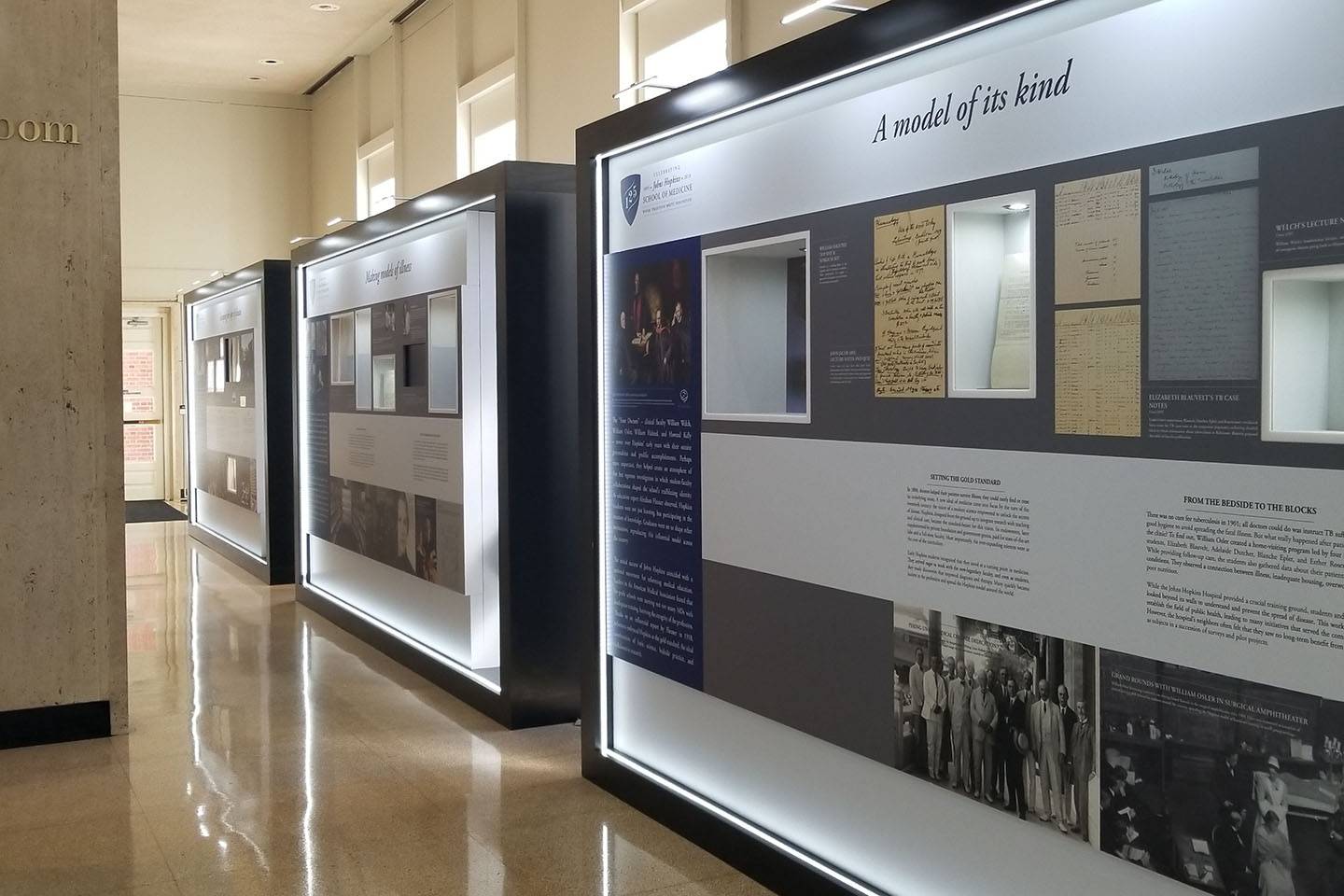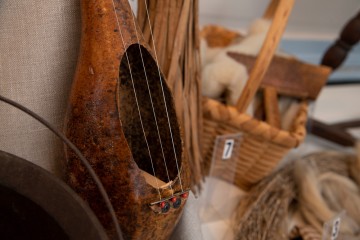While organizing an exhibition to mark the Johns Hopkins School of Medicine's 125th anniversary, curators came across a sepia-colored photograph they knew was misleading.
It showed 17 young men with faint smiles gathered around William Henry Welch, the school's first medical professor and dean. This group portrait of the first graduates of the School of Medicine, the curators quickly realized, was missing Mary Packard, who, of the three women in the class, was the only one to graduate. So they tracked down a photo of her from the archives of Vassar College, her alma mater, and placed it prominently in the exhibition alongside the men's.

Image caption: Mary Packard, a member of the School of Medicine's inaugural class, was left out of the class photo
Image credit: Vassar College Special Collections
"She had just fallen through the cracks," says archivist Nancy McCall. "It was really fun discovering more about her."
That was one of the many scavenger hunts McCall and her colleagues undertook while organizing the Hopkins Medicine at 125 exhibition, now on display through March 18 in the Milton S. Eisenhower Library on the university's Homewood campus.
The researchers made use of the Alan Mason Chesney Medical Archives, which offers a rich trove of photos, documents, instruments, and other artifacts. McCall, who is director of those archives, worked on the exhibit with Natalie Elder, the curator of cultural properties, and with recent Hopkins PhD recipient Alicia Puglionesi.
The Johns Hopkins School of Medicine first opened its doors in 1893, revolutionizing medical education in the United States. Its rigorous entrance requirements had no precedent in this country, and its experimental curriculum—based on German models—emphasized hands-on learning both at the bedside and in the lab. Early faculty members at Hopkins quickly gained international prominence.

Image credit: Katie Pearce
The anniversary exhibition traces the school from those founding days through the present, pointing to milestones along the way—among them, the first "blue baby" operation, in 1944, which paved the way for modern cardiac surgery; and the 1978 Nobel Prize–winning discovery of restriction enzymes. The display also fills in context from major global events, such as World War I, when a third of the faculty served overseas at the Hopkins base hospital in France.

Image caption: Anna the dog served as a research subject for surgical technician Vivien Thomas, who perfected the procedure for the blue baby operation.
Image credit: Chesney Medical Archives
Also on view are personal mementos, like the silk hat and surgical tools of William Halsted, medical professor and first surgeon-in-chief at Johns Hopkins Hospital. In some cases, these items came to the Chesney Archives by way of personal donation, McCall says. The family of Michael Lesch, for example, donated research notebooks from his days at Hopkins, before he identified the rare hereditary disorder that became known as the Lesch-Nyhan syndrome.
The curators saw a chance with this exhibition to spotlight some lesser-known contributions along the medical school's timeline. One area features the cursive notes of medical student Elizabeth Blauvelt, who took part in a Hopkins home-visiting program in the early 1900s treating Baltimore residents who suffered from tuberculosis. Elsewhere, there's a portrait of Anna, the dog who served as a research subject for surgical technician Vivien Thomas when he was perfecting the procedure for the blue baby operation. (Anna was later featured in a profile for Life magazine.)
Work on this exhibition, commissioned by the Centennial Committee at Johns Hopkins, began in summer 2017. The display was first installed in the Turner Building on the medical school campus; in October it was moved to the MSE Library's Q and M levels.
More information on the School of Medicine's 125th anniversary, including a timeline of historic achievements, is available online at a dedicated 125th anniversary website.
Posted in Arts+Culture, University News, Politics+Society
Tagged history, exhibits, johns hopkins medicine, johns hopkins history










